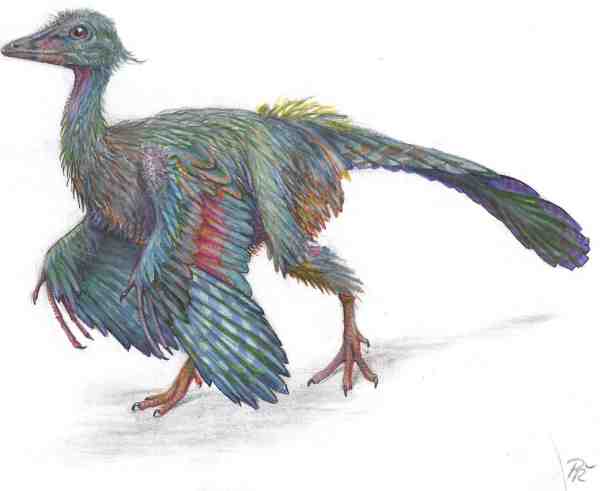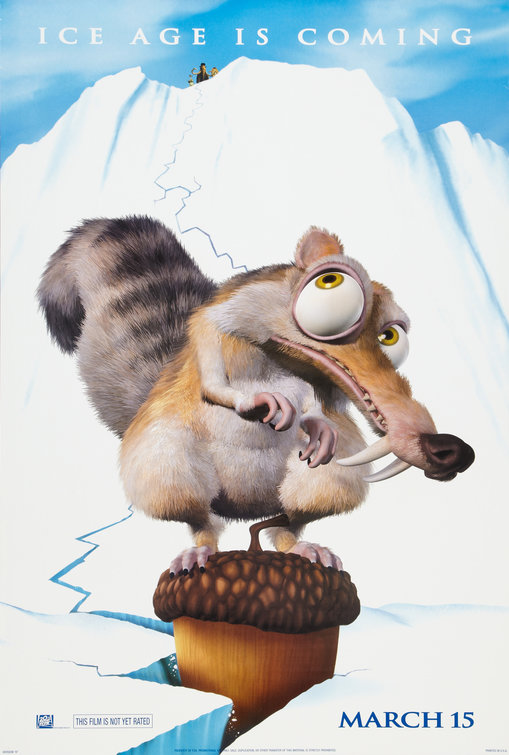
Posted on 04/15/2017 2:35:43 PM PDT by ETL
It’s a discovery that's straight out of “Jurassic Park.” Scientists have found a tiny section of a dinosaur’s tail trapped in amber, and not only that, it has feathers.
Dating to about 99 million years ago, or the mid-Cretaceous period, the amber containing the eight dinosaur vertebrae originally came from Myanmar. While scientists have known since 1996 that some non-avian dinosaurs had feathers, and even suspected that fact 10 years before that, this new find can teach them more about how feathers have evolved over millions of years. The feathered tail in question came from a juvenile dinosaur, likely a small coelurosaur.
"The new material preserves a tail consisting of eight vertebrae from a juvenile; these are surrounded by feathers that are preserved in 3D and with microscopic detail," Ryan McKellar of the Royal Saskatchewan Museum in Canada, said in a statement. He said the tail "was long and flexible, with keels of feathers running down each side." McKellar is a coauthor on a new study describing the discovery.
The find shows the feathers’ barbs, and the microscopic barbules on them, in incredible detail; the feathers don’t have a well-defined central shaft, or rachis, a fact that tells scientists more about feather evolution. The top part of the tail was darker-- a chestnut brown-- than its underside. The amber even contains remains of soft tissues that have carbonized.
(Excerpt) Read more at foxnews.com ...


They were warm blooded. Shows in the marrow.
Cool.
Your everyday chicken is a close relative to T-Rex, so I can see this Dino having feathers of some type.
But, if humans evolved from monkeys...why do we still have monkeys? ;)

Finally. An explanation for the demeanor of a cockatiel.

But, if humans evolved from monkeys...why do we still have monkeys? ;)
Because those monkey were never injected with alien DNA.
“They were warm blooded. Shows in the marrow.”
To marrow, To marrow, I love ya, To marrow, A brighter day!
I wish I had taken this subject in school- it is so fascinating.
http://www.ucmp.berkeley.edu/paleo/paleowhat.html
Paleontology is a rich field, imbued with a long and interesting past and an even more intriguing and hopeful future. Many people think paleontology is the study of fossils. In fact, paleontology is much more.
Paleontology is traditionally divided into various subdisciplines:
Micropaleontology: Study of generally microscopic fossils, regardless of the group to which they belong.
Paleobotany: Study of fossil plants; traditionally includes the study of fossil algae and fungi in addition to land plants.
Palynology: Study of pollen and spores, both living and fossil, produced by land plants and protists.
Invertebrate Paleontology: Study of invertebrate animal fossils, such as mollusks, echinoderms, and others.
Vertebrate Paleontology: Study of vertebrate fossils, from primitive fishes to mammals.
Human Paleontology (Paleoanthropology): The study of prehistoric human and proto-human fossils.
Taphonomy: Study of the processes of decay, preservation, and the formation of fossils in general.
Ichnology: Study of fossil tracks, trails, and footprints.
Paleoecology: Study of the ecology and climate of the past, as revealed both by fossils and by other methods.
In short, paleontology is the study of what fossils tell us about the ecologies of the past, about evolution, and about our place, as humans, in the world. Paleontology incorporates knowledge from biology, geology, ecology, anthropology, archaeology, and even computer science to understand the processes that have led to the origination and eventual destruction of the different types of organisms since life arose. The exhibits that we have set up here are created by paleontologists. More than just an overview of the diversity that has existed through time on this planet, the exhibits also highlight some of the research that paleontologists are conducting at the Museum of Paleontology.

That movie REALLY scared the cr@p outta me the first time I saw it. The next dozen or so times weren’t so bad!
Well, how could I have overlooked THAT? LOL!
A scientist said that the T-Rex was probably a road-runner from hell.
When you gotta go, you gotta go.
But, if humans evolved from monkeys...why do we still have monkeys? ;)
Well, because most scientist who subscribe to that theory say that both humans and monkeys evolved from a common ancestor, not from monkeys to humans.
Monkeys apparently didn’t make the cut.
Because we have Chicago thugs still evolving?
Some things are better off extinct, IMHO. These days my only worry is something in the ocean eating me alive.
There’s a very good reason that I live in the Midwest! :)
Disclaimer: Opinions posted on Free Republic are those of the individual posters and do not necessarily represent the opinion of Free Republic or its management. All materials posted herein are protected by copyright law and the exemption for fair use of copyrighted works.